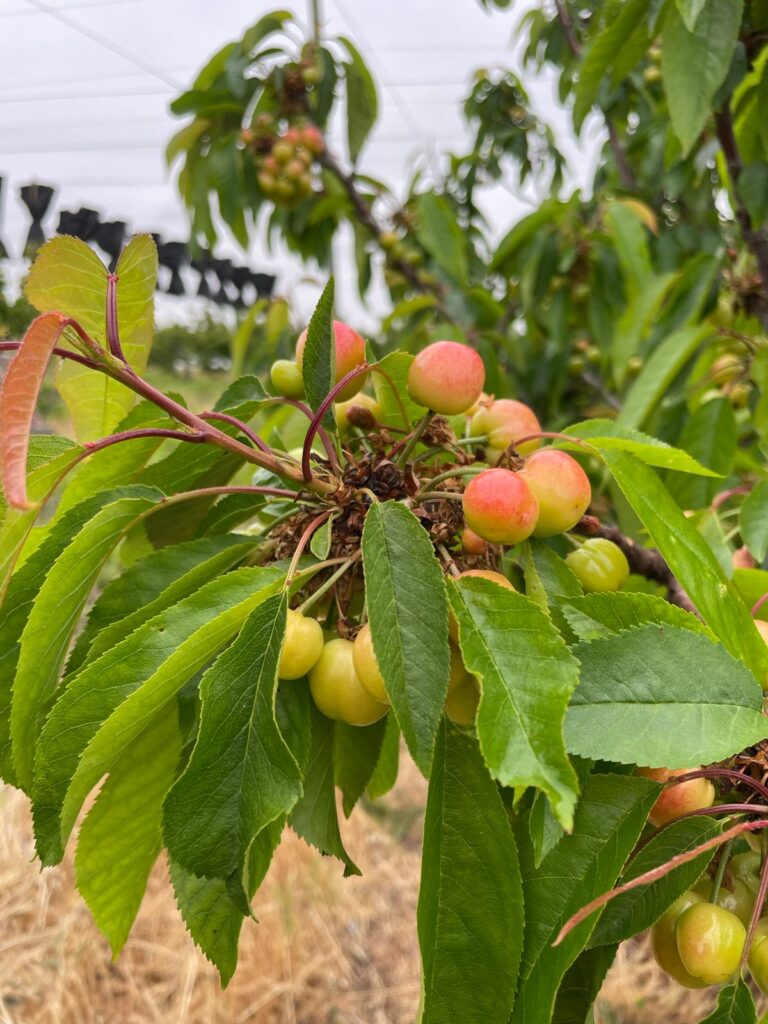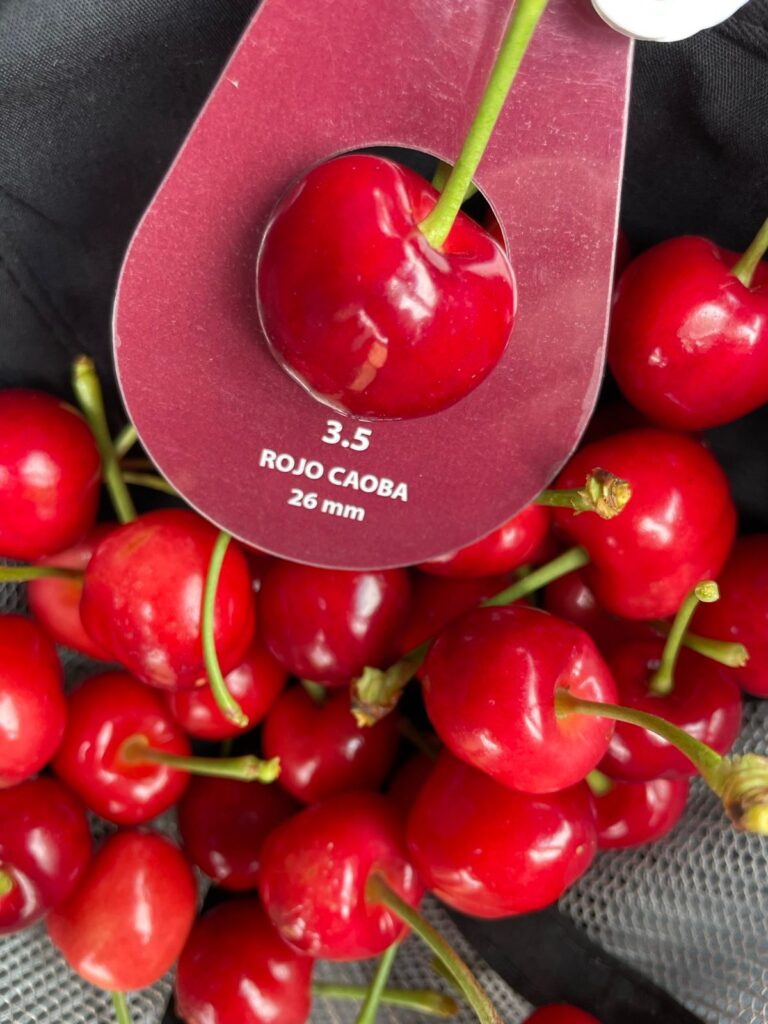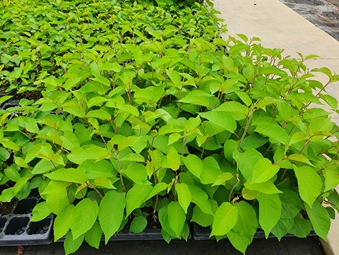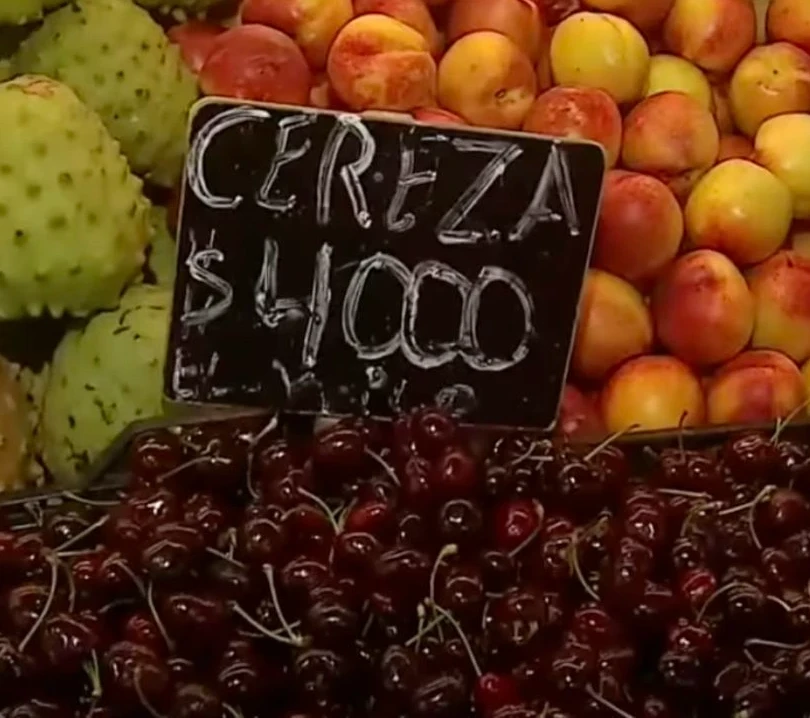The Chilean cherry season is gearing up to start the first harvests of the 2024-2025 season, but the challenges don't stop there, and this season has added another hurdle for producers and exporters, specifically the fruit fly. Given its importance for the sector, Frutas de Chile has organized the webinar “Preparing for the 2024-2025 cherry season with phytosanitary challenges.”
Miguel Canala-Echeverría, General Director of Frutas de Chile, welcomed attendees to the virtual meeting, clearly stating that “this season we will face two significant challenges; the fruit fly is a major concern for various operational aspects related to fruit handling, cold treatment, and more. Additionally, we expect a growth of 60% in volumes compared to last season.”
For her part, Claudia Soler, president of the Chilean Cherry Committee, indicated that “the first estimate is 131 million boxes for 658,000 tons. Initially, we had forecast an export level of between 115 and 120 million boxes, which represents a 59% increase over the previous season.”
Given the significant increase, Soler explained that this presents a major challenge for the quality of the fruit, “as it will affect the movement and turnover of the fruit. Chinese consumers demand quality, and they expect large sizes.” In this regard, she explained that the Cherry Committee is increasing marketing resources this season, “and we will invest more than $9 million in direct promotion, which is more than 100% more than last season.”
She further added: “We are aware that we have a large volume, and now is the time to invest in marketing to stimulate greater consumption, not only from the consumers we already have but also from the consumers we want to bring into the category.”
Another strategy that will be implemented in the campaign is to reach the regional areas of China with Chilean cherries. Soler was clear in stating that “we want to deeply penetrate China, where we believe there is still significant growth potential.”

China
Considering that China is the main destination for Chilean cherries, the president of the Committee emphasized that, on average, 33% of the fruit is shipped with cold treatment. He commented that, during a visit to the country, the positive interest shown by officials at various ports to facilitate the entry of cherries and resolve any issues was evident.
“In general, we believe there is a good willingness to collaborate and that they are aware that a significant percentage of our fruit will be cold-treated, which is a new experience for our sector,” he remarked.
He added that each port in China is managed “a bit independently” and that customs officials “in some cases will request information from the shipping company and in others from customs agents. For this reason, we will be in direct contact with all the ports and will be very attentive both here and in China.”
The 59% increase in volumes represents a logistical challenge for getting the fruit to market in good condition. In this sense, Soler explained that “we are seeing that during the peak week there will be a shipping service deficit, so we will communicate the information to the shipping companies so they can start planning, ensuring that no issues arise during the season.”
Start of the season
To understand the current situation of the season, Portalfruticola.com spoke with cherry expert consultant Jorge Astudillo, who commented that the sector had hoped to be free of the fruit fly by the end of October, in areas where the insect had been detected and where cherry production takes place.
Astudillo explained that this situation did not occur because the environmental conditions in winter and spring, in terms of accumulated degree days, were much slower than expected. He added that campaigns, based on the pest’s biology, establish a number of degree days for the different stages of the insect, which under normal conditions takes about a month and a half, “but now it has taken up to two and a half months due to the cold.”
The early cherry consultant indicated that under this condition “we are in the third cycle, the third generation, which is theoretical, since the accumulation of 10-degree days was completed on the first of April, which was the last capture until now. So there are still about four weeks left, meaning that if the campaign is cleared, it will be after November 15.”
In light of this situation, he emphasized that “everything we could have sent to China by air, we can no longer do.”
When asked about the start of the harvests, he emphasized that some companies will begin next week, as they have fruit in greenhouses. “This is the year where we will all have the best expression of the different areas, both in terms of dates and productivity, as well as the varieties. This takes away the exclusivity of Ovalle for early fruit; today, management and the use of technology allow us to take advantage of the microclimates in the different areas.”

Regarding the measure by the Agriculture and Livestock Service (SAG), he was clear in saying that the early fruit industry was preparing, so everything outside the quarantine radius of 7.2 kilometers is ready, “we have taken the protocols from Korea and Japan to potentially reach those markets as well, as they are markets that may value cherries a bit more.”
There are also other markets for fruit within the 7.2 km range, which have fewer quarantine restrictions, such as Europe, “which last year already had some air shipments that responded very well in November with returns similar to the fruit sent by air in other seasons,” Astudillo said.
According to the consultant, there are alternatives like Europe, particularly Spain and England. There are also the United States, Brazil, Mexico, the United Arab Emirates, Taiwan, and Hong Kong, which do not have quarantine restrictions. He stated that “this will be useful for prospecting other markets. It will help the industry, because whatever happens in China can seriously impact the destination of this fruit, so having alternative markets can be positive.”
India, an alternative
For several years, there has been talk about the importance of market diversification for Chilean cherries, but in practice, the industry has struggled to make the leap due to the high prices China is willing to pay. However, a market that has begun to emerge is India. In this regard, Claudia Soler stated, "It is an ongoing issue, and we are still looking for alternatives."
The commission leader was quite honest in saying that she had talks with Costco: "They told me that they will definitely have a fast service, and we are confirming the date. We are evaluating how to have a slightly more frequent service to meet the members' needs, as this is a market we want to start developing."
She recalled that last year, the fast service to India took 37 days, "two companies sent the fruit, and it arrived in very good quality and condition. This is what we hope to replicate this season," she said.
Chile
The Coquimbo fruit registry indicates that there are currently 354 hectares of cherry trees, with about 200 hectares in production, yielding between 5,000 and 15,000 kilos per hectare. "So we would have between 1,200 and 1,500 tons for this season, and last year we did not exceed 300 tons, so the increase is exponential," Astudillo said.
He concluded by saying, "So far, we have a very beautiful fruit, with a very good size projection, and we are working on all the strategies to enhance the color and sugar content, and we are already in the final stretch."
Source: Portal Frutícola
Images: Portal Frutícola
Cherry Times - All rights reserved












